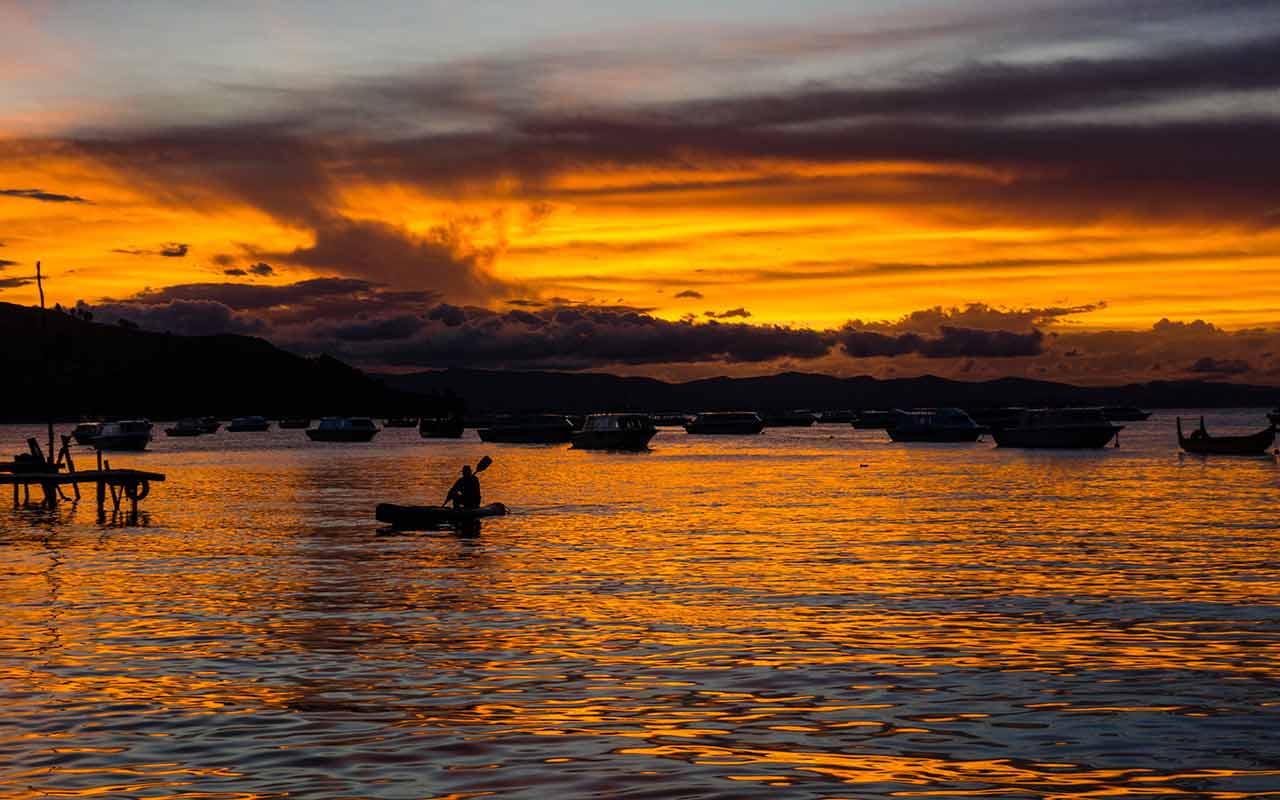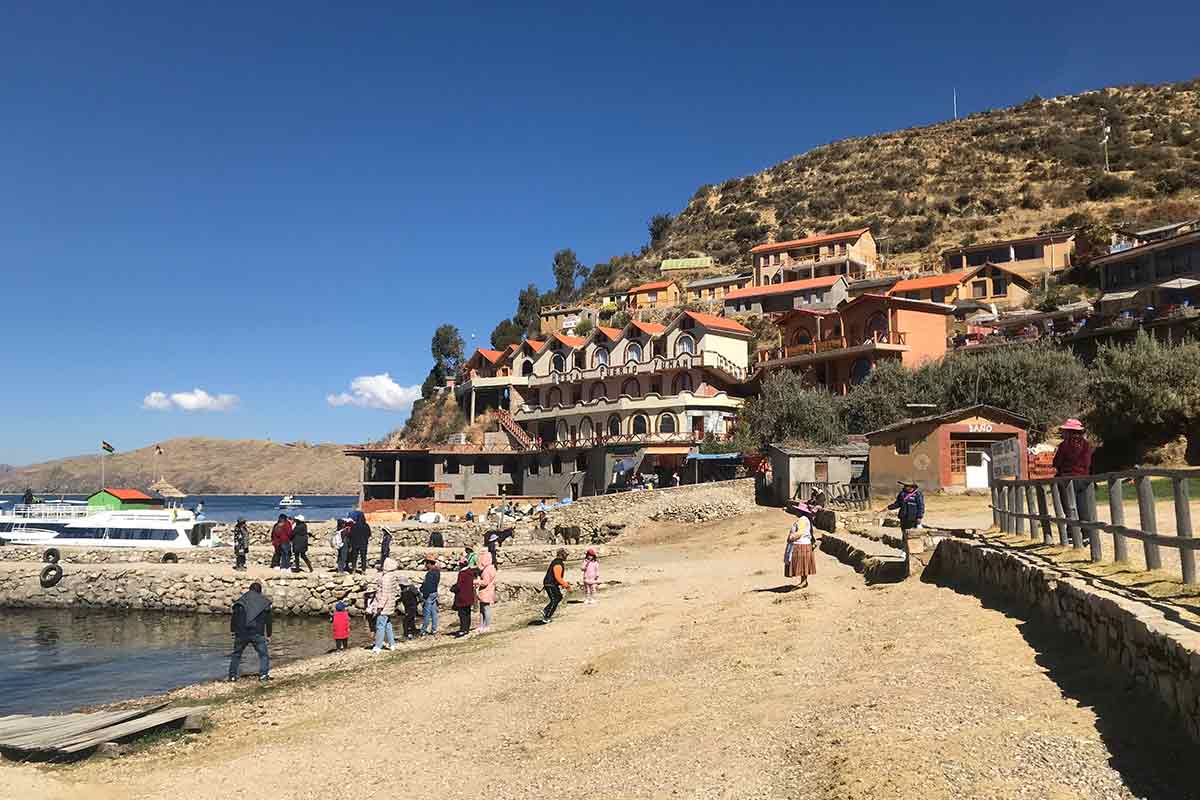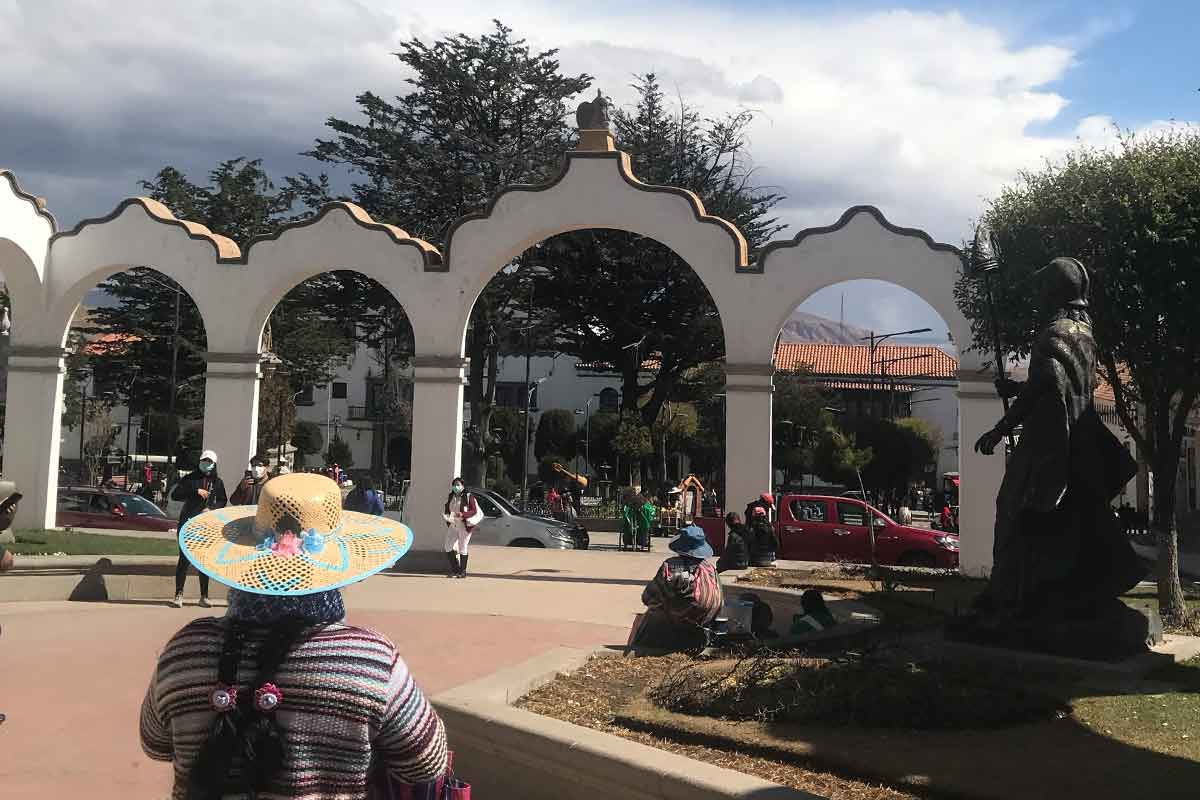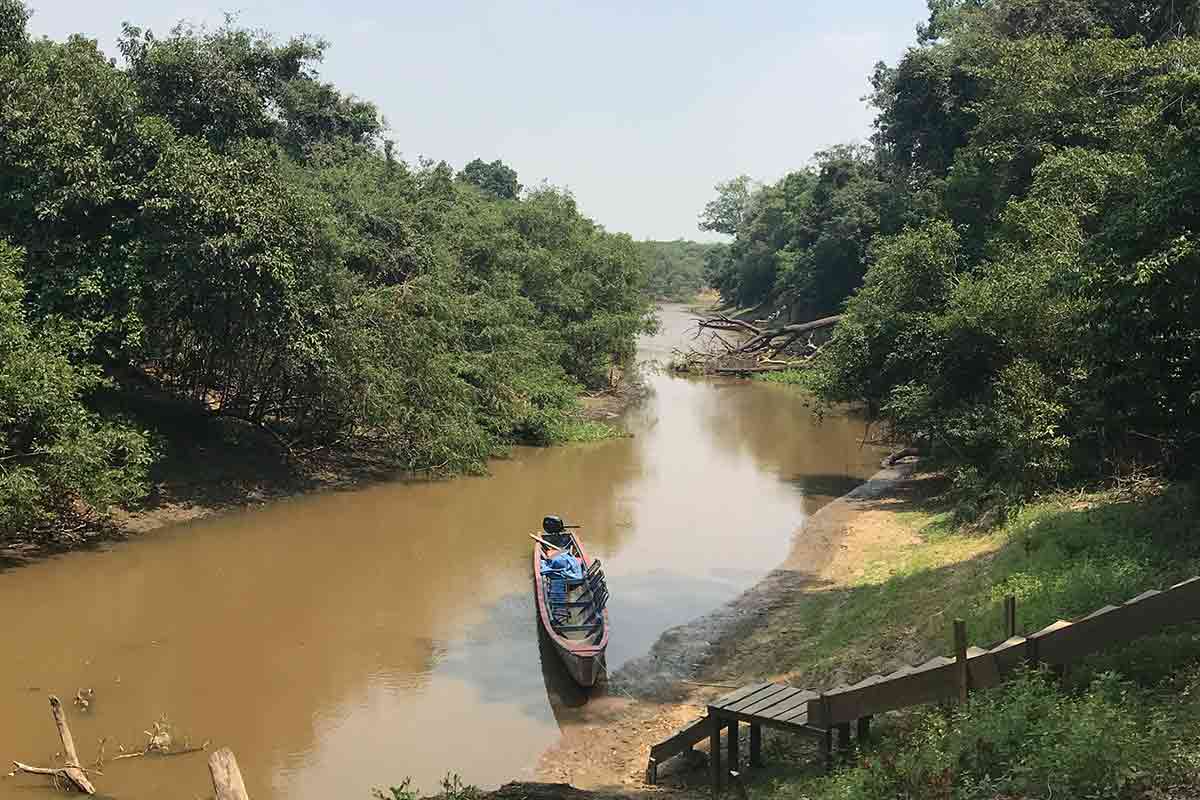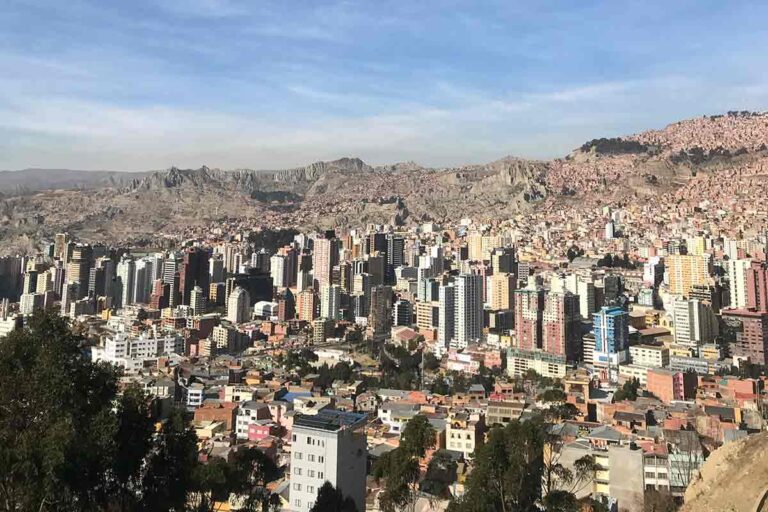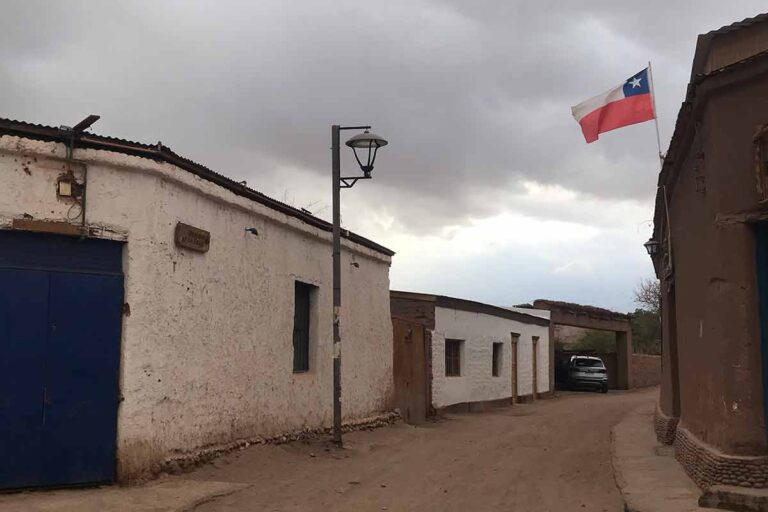Backpacking Bolivia Itinerary
Welcome to our backpacking Bolivia itinerary.
Bolivia is a great destination for tourists who want to have an authentic South American experience, so it’s one of the best options to consider.
The exciting, yet mystical allure of Bolivia has long made it one of the most popular countries to backpack in South America.
Backpacking Bolivia Itinerary
The mountainous country is home to cultural sites, cloud and rain forests, and the world’s highest navigable lake, among other wonderful things as such.
All this enables you to have many great adventures exploring the land of Bolivia, and today’s itinerary will narrow down the options for you!
BLATAM backpacking data:
- 💰 Currency: Boliviano
- 🇧🇴 Language: Spanish
- 🌎 Population Size: 11.7 Million
- 📍 Best Secret: Rurrenbaque
- 🍴 Eat: Silpancho, Anticucho
- 🥛 Drink: Sucumbé
- 💸 Average Daily Budget: $15-20
Is Bolivia Worth Visiting?
Yes! Home to the breathtaking Salar de Uyuni, incredible lakes as well as off the beaten path towns and jungle, there really is no other country like Bolivia.
It’s also one of the cheapest to backpack in Latin America, where daily budgets can be around $20 (or less) with ease. No wonder many have a hard time leaving after visiting this incredible nation!
Bolivia itinerary Map
Is Bolivia Safe?
When it comes to traveling to any South American country, safety is often a big concern for tourists. Bolivia claims to have the lowest crime rates, but that’s not necessarily true.
Our basic tips for safety in Bolivia include:
- Dress to blend in; leave jewelry and designer clothes at home.
- Avoid using ATMs at night or outside.
- Don’t flaunt your mobile devices or other valuables you decide to bring with you.
- Keep your belongings close and leave valuables at home or in the hotel/hostel safe.
- Use legitimate taxis, avoid just picking random ones off the street.
The reality is that this country is poor, so crimes, protests, and demonstrations happen regularly, which makes it a safe(ish) country to visit.
So if you are arriving after backpacking Argentina you may feel a little different in terms of safety but the key is to never let your guard down.
The biggest risks are petty crimes, ATM theft, express kidnappings, and sketchy taxis. However, with some trip savvy and travel precautions, you will have a good time. Traveling with this secure Money Belt is a really good place to start!
Safety facts about Bolivia
- The best way to evaluate safety is by looking at the 2020 Global Peace Index. This measures the state of peace of each country in comparison with the rest of the World, by evaluating both tangible and qualitative indicators.
- Bolivia ranked as 86th out of the 163 nations measured, which is similar to that of Peru and Cuba. For comparison, The United States ranked as 121st.
- The big cities in Bolivia can be quite sketchy, and especially that of the capital, La Paz. Pickpocketing is usually the main problem here, so take extra caution with what your bring and try not to dress for too much attention.
- There’s also presence from gangs in the country, which is due to Bolivia being the third largest producer of cocaine in the world. However as long as you avoid this and look up the safer areas where you are going, this will most likely have no effect on you in any way.
- Despite Bolivia being a poor country, the government recognises how important tourism is for growing their economy, and have been making large strides in terms of improving the safety here.
Overall you should be fine, just take out some travel insurance and exercise extra caution in bigger cities like you would anywhere else in the Latin world.
Bolivia Backpacking Itinerary
As you can imagine, there are many great things to do in Bolivia.
Today, we will narrow it down to the top 6 places to visit so you don’t miss the greatest highlights. Let’s get into it!
La Paz
The breathtaking city of La Paz is the administrative capital of the country and it’s located at roughly 3,650 meters or 11,975 feet above sea level.
That makes it the highest capital city in the world and you can imagine that the sight from above is truly incredible.
There’s plenty to do in this city and a guided walking tour will help you cover the most important spots in La Paz, their history and cultural significance.
Other activities include visiting the Valley of the Moon, going to Mirador Killi Killi, walking through Calle Sagarnaga, visiting the National Museum of Ethnography and Folklore, going to Mercado de Las Brujas, and more.
Coroico
Coroico is a lovely time whose name derives from a Quechua word that means “golden hill”, which is a perfect way to describe it.
You’ll find Coroico is located on the Andean foothills and it’s an amazing resort village that’s worth your time.
It’s a great place to stop on the way to or from La Paz and you’ll be able to explore the jungle forests on amazing hikes. Extreme mountain biking is also an option!
From Coroico we recommend heading on this reputable bike tour along Death road for the ultimate adrenaline pump.”
Sorata
Sorata is the base camp for people who want to hike the mountains of the Cordillera Real, so if that’s your main purpose, this is the place to go.
The Cordillera Real is the widest part of the Andes Mountains so it’s a challenge, but the mountain-climbing treks are truly amazing and perfect for lovers of this outdoor activity.
Before going hiking, make sure you get yourself some solid, high-quality hiking boots. You can thank us later!
Salar de Uyuni
Salar de Uyuni is easily one of the most stunning places to visit in Bolivia and it’s located in the Andes Mountains.
It’s not hard to see why this landmark is one of the best places to visit in South America and why it made it onto our bucket list.
Salar de Uyuni is the largest salt flat on earth and there altitude variations in the entire area. When you get there, the view is simply breathtaking.
It’s an endless white landscape during the dry season, but the rainy season covers it with water and it’s even more beautiful as it reflects the blue sky to make a surreal landscape.
At night the stars are extremely visible in the sky and during sunrise, the reflection of the salt flat is very clear. Not convinced? Try a day trip with a starlight and sunrise tour to see the ethereal beauty of Uyuni.
Lake Titicaca
Lake Titicaca is another one of the best places to visit in Bolivia and it’s the highest navigable lake in the world.
The lake is shared with Peru, but the side of Bolivia gives you a more intimate experience. You’ll be able to visit the twin islands, called Isla del Sol and Isla de la Luna.
This is where the sun and the moon were born according to local legend, so it’s an interesting place to visit. On Isla del Sol, you’ll discover many Inca ruins as well.
Those who don’t have much time can head on this day trip from La Paz. Not only will you visit the picturesque Isla del Sol, you’ll also learn about the local Aymara culture as well as making a stop to explore Copacabana
Tiwanaku
Last but not least, we have Tiwanaku. A long time ago, this place was the capital of a major civilization that existed before the Incas.
Though only a small part of Tiwanaku has been excavated, archeologists estimate that as many as 20,000 used to live there.
The remains include temples, large gates, carvings, and even a pyramid, so it’s a must-visit. You can visit the Tiwanaku ruins together with Lake Titicaca with a one-day tour – the perfect combination if you want to maximize your backpacking trip!
Bolivia Itinerary (2 Weeks)
Here we’ll now cover our very best itinerary of Bolivia. As well as keeping an eye on time, it’s also been designed to keep things fresh and exciting too for you.
La Paz (Days 1-4)
We’ll start off our Bolivia Itinerary in the capital (well, at least the main one) of La Paz.
There is absolutely tonnes to see and do in this vibrant and bustling city, although you’ll want to take your time and plan properly considering the high altitude (and unwanted effects it usually brings).
On the first day start light by exploring the city and its best sights. These include a hike up to Mirador Killi Killi, travelling via the Teleférico System, visiting the unorthodox Mercado de las Brujas and even watching a Cholita Wrestling Match (held every Sunday and Thursday).
Some of the best things to see and do around La Paz include the infamous Bike Trip down Death Road. Known as the world’s most dangerous road, this stretch has claimed many lives, and really is an adrenaline rush for those who can stomach the often close straight-drops.
You can also hike Huayna Potosí, one of the tallest snow-capped mountains around with an altitude of 6094m. You’ll need 2/3 days in total for the ascent to the summit. See our La Paz backpacking guide for more details on what to do!
Copacabana (Days 5-7)
This city is the gateway to Lake Titicaca, the largest lake in South America. You can catch the bus here from near the main cemetery in La Paz, which takes around 5 hours.
This lake was known as the birthplace of the Incas, and of course is held in high regard throughout modern Bolivian culture. Copacabana is a chill place to stay, but there’s little else to really see here to be honest.
Take a boat ride out to Isla del Sol, where you can hike the island and get the most stunning views of Lake Titicaca. You can also enjoy a hot soup at the lake’s edge whilst watching the sunset, and also climb Cerro Calvario for the best views around.
Be sure to visit Tiwanaku Ruins too on the way to Sucre, with this ancient site being the most important in all of Bolivia.
Sucre (Days 8-10)
From Copacabana, we now take an overnight bus to the city of Sucre. This is arguably the prettiest city in the country, and there’s a lot to keep you occupied during your 3 day stay here.
Within the city, you’ll be blown away by the abundance of white-washed buildings and unusual architecture (especially compared with other Bolivian cities).
We recommend heading to the Convento de San Felipe Neri, which has a stunning courtyard and design, as well as some great rooftop views.
One of the most authentic things you can do is to take a Bolivian cooking class. Not only will you enjoy a three course meal, however, you’ll also learn how to make different Bolivian dishes and cocktails too.
For the best panoramas of Sucre, head up to La Recoleta which features a colonial church as well as a sweeping landscape of white, which is best seen in the evening.
The absolute best day trip from Sucre is to the Parque Cretácico, which is actually quite close (around 40 minutes by bus).
It’s one of the best sites to see dinosaur footprints in all of Latin America, and you’ll be able to get up and close with them for good sizing. There’s also an interesting museum here as well as life-sized dinosaurs for extra photo fun.
Potosí (Days 11-12)
Now we’ll climb some serious altitude to the mining city of Potosi, located at at a dizzying 4090m above sea-level.
The bus takes around 3 hours from Sucre, and be sure to bring extra layers as these final legs of the journey get much colder.
The absolute best thing to see in Potosí is the Cerro Rico mine. Known as the most dangerous mine in the world (Bolivia being home to lots of these superlatives!), it’s claimed thousand of lives due the harsh conditions and previous rules that saw miners go in for as much as 24 hours straight a day.
Whilst many contemplate the ethics of such tour, you’ll actually be helping the miners with small gifts and also providing exposure of their lifestyle. And take it from us – it really is a humbling experience. We recommend heading on this safe tour of the Cerro Rico mine
Aside from the mine, there’s little else to do in Potosí. Whilst waiting for the next overnight bus, you can walk around and explore the rich contrast of colonial architecture, and hang out in the Plaza 10 de Noviembre.
(Days 13-15)
Now we finally arrive to the most anticipated destination of all!
Uyuni is home to arguably one of the most varied and spectacular regions and terrains of all in South America. We’ll take the bus from the main bus terminal in Potosí, which will take around 4 hours in total.
The town itself doesn’t have much to see, however it’s the jumping off point for tours into the region. When booking a tour, we recommend browsing many different agencies online for different prices, however the actual itineraries will be more or less the same.
You can either choose the One Day, Two Days or Three Days options, and we fully recommend the latter. Also, this 3 Day Tour is without a doubt one of the best tours I (George) have ever gone on. Here you’ll see literally everything there is to see in this stunning region.
The three day tour firstly stops off at the legendary Salt Flats, and you’ll also explore Incahuasi Island. On the second day you’ll visit the infamous Red Lagoon, the Árbol de Piedra and other noteworthy sites.
On the third and final day you’ll get up and close with the smoking geysers of Sol de Mañana, and also the stunning Laguna Verde before coming back to Uyuni.
From here you can either take the bus back to La Paz for your international flight, or continue your Uyuni Tour onwards to San Pedro de Atacama in Chile.
That’s the end of our 2 week Bolivia itinerary. Now let’s move on to our most important tips, so you can have the best experience possible here.
Bolivia: Travel Safety Tips
As we’ve established, Bolivia is a relatively safe place to visit, but tourists are encouraged to follow certain precautions and be careful while they are exploring the country.
⬇️ Below you can find a list of our top recommendations for Bolivia:
- We suggest learning some basic Latin American Spanish before you arrive in Bolivia as it can really help you out in different situations.
- Avoid walking at night in big cities such as La Paz, Santa Cruz, Oruro, Copacabana, and others.
- Before you travel through Bolivia, make sure you research the current situation because disputes between local communities are common in some areas and you want to avoid that.
- Roadblocks are common, which leads to bus services being canceled and you may get stranded. Keep an eye out for that.
- Look out for the top rated hostels in Bolivia for the most comfortable rooms and meeting like minded people etc.
- La Paz’s hostels tend to have great bars and things going on, so you need not venture too far! Diesel Nacional is a really cool cocktail bar worth checking out. For those who like the heavier stuff, then there’s the infamous Cocaine Bar which pops up in different places along Route 66, although it’s best to ask locally as its always changing location (unsurprisingly).
- Parts of Bolivia can reach quite high altitudes, especially La Paz and Lake Titicaca. We recommend spending a few days acclimatizing before attempting anything extraneous, as yes, altitude sickness can happen to you (George found this out the hard way).
- Don’t go near Coronilla Hill if you visit Cochabamba and avoid rough areas in general.
- Despite being a poorer country, the quality of food in Bolivia is some of the best and varied on the continent. Be sure to try out Anticuchos, Pique Macho and Chajchu, which are all Bolivian staples.
- Salar de Uyuni, Route 66, Islas del Sol (Lake Titicaca), Parque Cretácico (Sucre). See this list of top rated tours in Bolivia
- Don’t mess with drugs and avoid places where they are a major feature; you risk going to prison if you’re caught.
Follow these tips and practice common sense while you’re in Bolivia and you won’t have any issues. Have fun, but stay safe and be cautious.
Getting Around Bolivia
When traveling around Bolivia by bus is an option, and though it can be uncomfortable or a bit nerve-racking at times, it’s relatively safe and it’s inexpensive.
If you decide to use this means of transportation, you need to take a few precautions.
First of all, if you’re traveling long-distance, you should spend a bit more on direct cama, semicama or tourist-class services so you can be more comfortable and safe.
Keep your belongings on sight and avoid bringing anything you don’t need.
Bring snacks and water for the road. And pay attention to the driver; if they seem intoxicated, don’t get on board. Drunk driving accidents are more common than they should be on buses, so keep that in mind.
Some of our favorite hostels in Bolivia include:
Selina (La Paz), Hostal CasArte Takubamba (Sucre), Apart Hotel Turquesa (Potosí).
Best Time to Visit Bolivia
We’ve spoken a lot about the best time to go to South America on this blog (George is absolutely obsessed with checking the weather when we travel).
Bolivia has very pronounced dry and wet seasons, which can vary the experience you will have quite considerably.
The wet season, which runs from November until March, is an incredible time to visit. Firstly this is the time where you can witness the Salar de Uyuni’s mirror reflection (Google this if you haven’t already), as well as seeing the more lush and vibrant green colours of the Amazon.
It’s also warmer, with Sucre for example having average temperatures of 59°F, compared to that of 52°F in the summer season. However this time is also a nuisance as many roads become inaccessible due to flooding, with transport in the Amazon becoming impossible.
The dry season is the best time to visit Bolivia, especially if looking to see the whole country on your trip. Running from May until October, temperatures are more comfortable than the searing levels of the wet season.
Due to less rain, you’ll see much more clearer skies and have less trouble getting around. Whilst cold year-round, Lake Titicaca does get a little more chilly this time of year, with an average daily temperature of 48°F (compared to 55°F in the wet season).
What to pack for Bolivia?
Bolivia has an extreme range of climates, so if you plan on backpacking the whole country in one go then you’ll need to prepare accordingly.
For example the jungle in the north is hot and humid year-round. High altitude destinations like Lake Titicaca and La Paz are cold year-round.
In the centre of Bolivia, in cities like Santa Cruz de la Sierra, temperatures are more or less hot year-round.
You’ll need to pack several layers for when visiting higher altitude areas, as it can sometimes drop below freezing. You’ll also want lighter layers for the hotter destinations in the Oriente region, as well as for any trekking you do through the sweltering Amazon.
As well as these, you’ll also need to pack all the usual essentials which include toiletries, a good pair of hiking boots, toiletries, a document holder, towels, a water bottle as well as a daypack for any excursions you’ll be taking part in.
Got Travel Insurance for Bolivia?
Backpacking Bolivia Itinerary: Final Words
Bolivia is such an exciting country to visit and is great addition to any a backpacking South America trip. Refer to this itinerary whenever you need and you will be able to enjoy the greatest highlights!
👉🏽 P.S. If you’ve found this guide helpful, buy us a coffee here to say thanks! Or, support us by downloading our South America Travel Bible to get our best content.
“Dear traveler! Some links in this post contain affiliate links. Meaning, if you click through and make a purchase, book a hostel or sign up for a tour, we may earn a small commission at no additional cost to you. Your support means a lot and helps us to carry on traveling and maintaining the quality of this site for you.”




